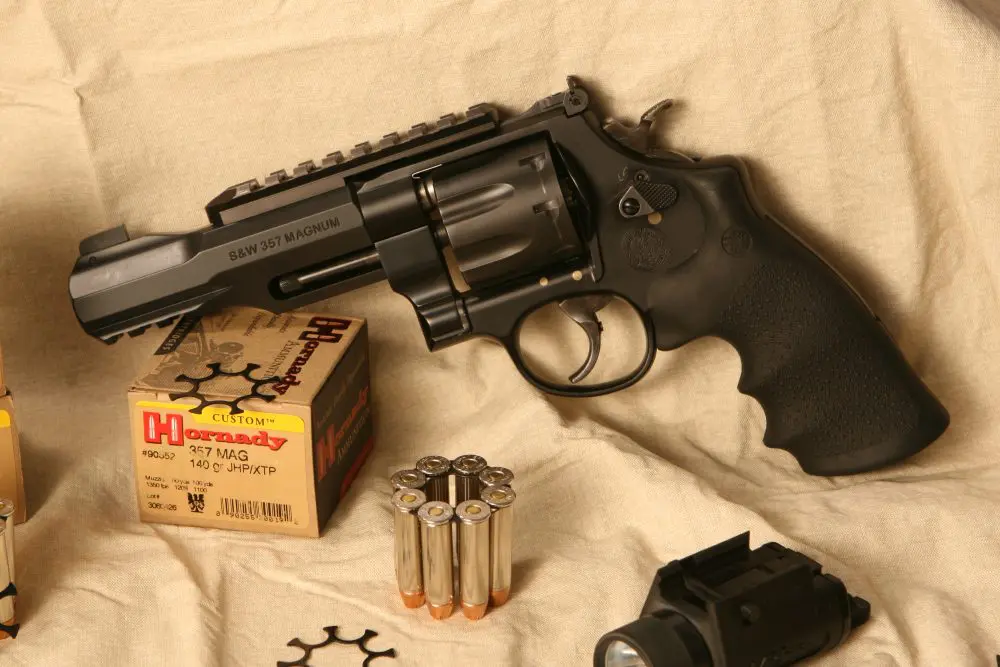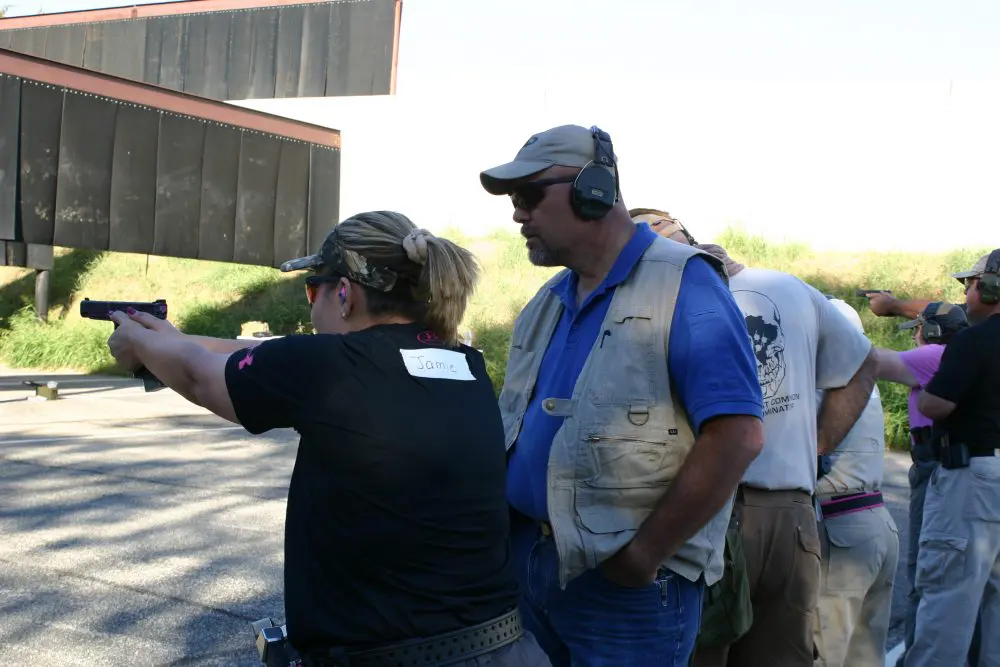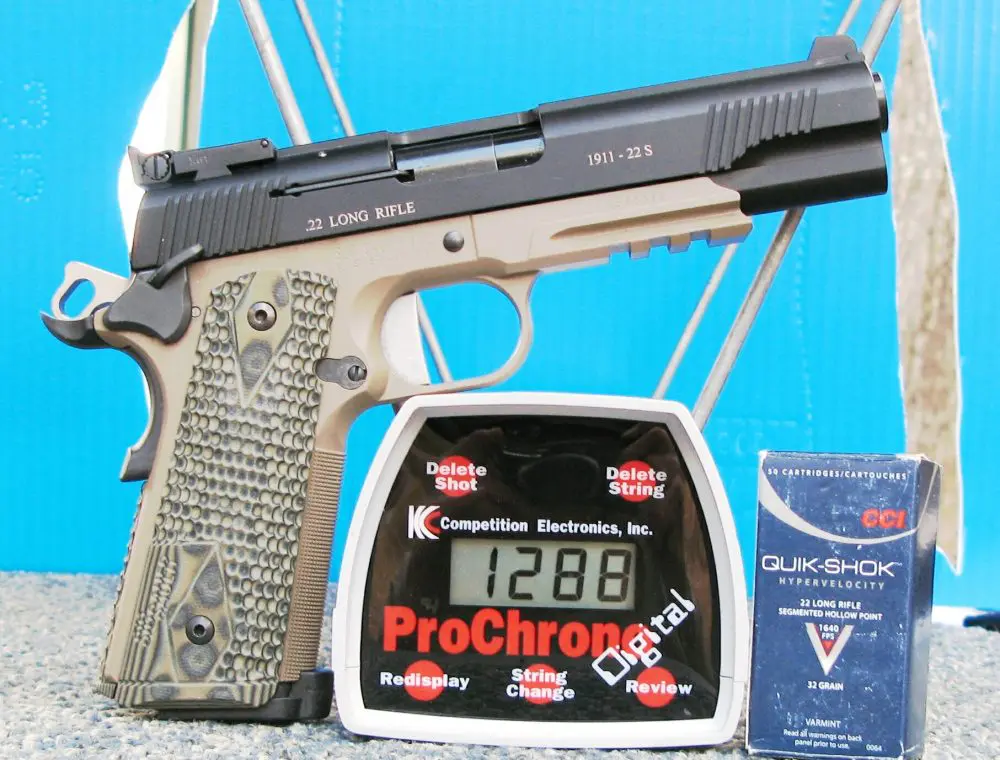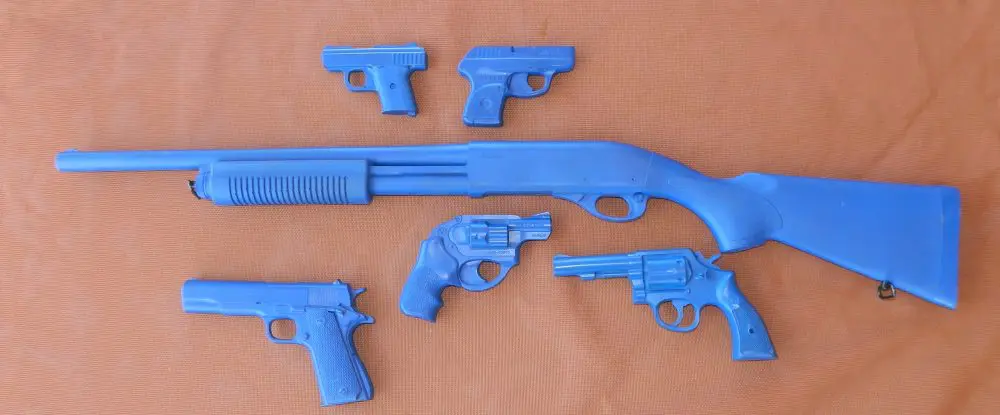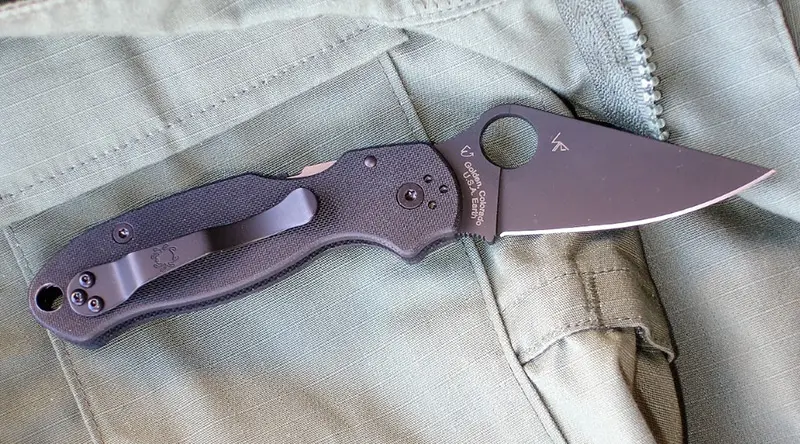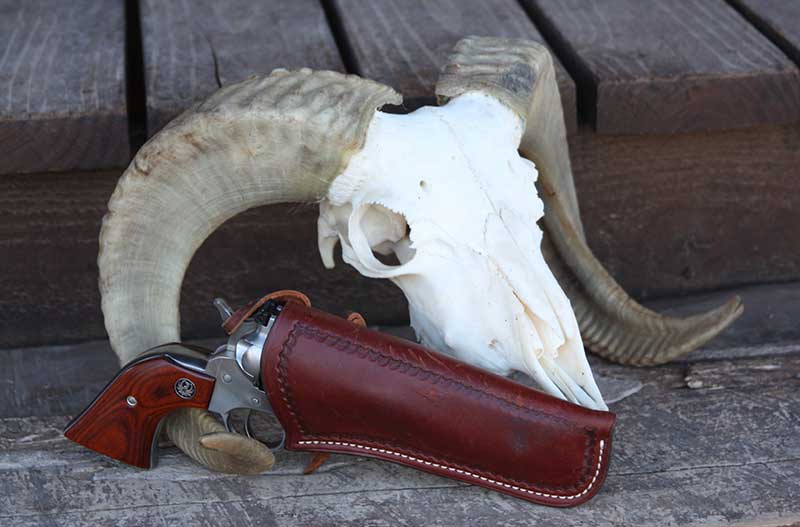
Harry Truman had a sign on his desk that read, “The buck stops here!” It was a simple message acknowledging that he alone was responsible for the final outcome of whatever situation he faced. Americans who take responsibility for their own safety through the use of firearms should understand they have adopted that same code.
In my many trips to Gunsite, the Academy staff has infused me with a variation of that motto. When you or your loved ones face a life-threatening situation, there is only one acceptable attitude: “The threat stops here!”
Gunsite teaches you to fight with a handgun by dealing with a variety of subjects, including mindset, technique, and tactics. While they do try to make you faster in your ability to deal with a threat, regardless of what shooting drill you’re doing, the consistent message is, “Make your hits.”
There’s an apparent contradiction at work here. While smaller caliber handguns produce less recoil and allow you to make more hits in less time, larger calibers make bigger holes in an adversary, which tends to end threats more quickly.
Over the last few years, ammo manufacturers have invested a great deal of time and money into making small bullets that (reliably and repeatedly) become big bullets upon reaching their destination. The consensus among law enforcement experts is that 9mm self-loading handguns are the best all-around solution for self-defense, and that almost anyone is capable of physically mastering these guns. Almost.
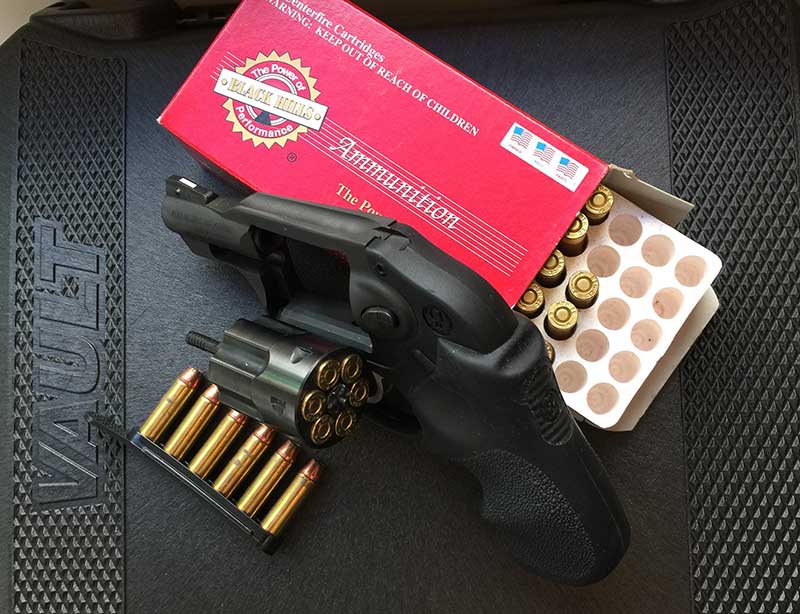
For whatever reasons, some individuals have an issue with semiauto pistols, but their comfort and confidence levels soar when presented with a revolver option. The standard “defensive” revolver for years was the .38 Special, and it still tops the charts when a small revolver is desired for pocket or deep concealment carry.
However, there is a smaller caliber that packs a serious wallop without unmanageable recoil and fits in smaller handguns. It’s the .327 Magnum, and with either rapidly expanding jacketed hollow-points or heavy-for-caliber hard-cast bullets traveling at 1,300 to 1,500 feet-per-second (fps), it represents a decisive solution for threats against your family.
Handguns in .32 caliber are not new. They were used in small revolvers by many Americans in the late 19th and early 20th centuries. Our European counterparts had pocket semiautos chambered in .32 ACP. Using round-nose bullets (either lead or FMJ), they weren’t known as reliable manstoppers.
In 1984, Harrington & Richardson, working with Federal Cartridge Company, made an inexpensive revolver that could shoot 85-grain JHP slugs at over 1000 fps—the .32 H&R Magnum. On paper, the round produced a muzzle energy comparable to the .38 Special with less recoil. Ruger and S&W made some single- and double-action revolvers respectively for the new cartridge, but they didn’t catch on with the “Magnum happy” American shooter.
In 2007, the .327 Federal Magnum was born. Basically it’s a stretched (added slightly more than 1/10 inch) .32 H&R Mag that operates at much higher pressures—even higher than the .357 and .44 Magnums.
By this time the public was used to higher capacity revolvers, so gun manufacturers stepped up the round count. Ruger initially chambered the round in both their Blackhawk single-action (eight rounds) and double-action GP100 (seven rounds), while S&W offered a couple of J-Frames that held six rounds each.
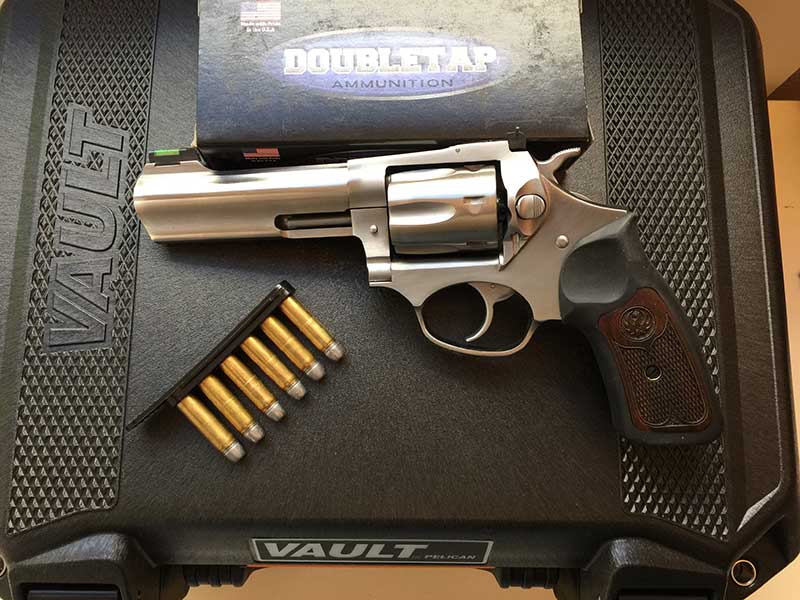
I had a chance to work with the larger frame Rugers and both were easy on the recoil, but I suspect they were regarded as a bit larger than needed for a defensive handgun. Smith & Wesson J-Frames were the right size but slightly heavy for concealed carry and a bit pricey. With full .327 Magnum loads, they were incredibly loud—particularly the ported model when fired indoors.
Ruger’s current offerings are more in line with what we perceive as a defensively oriented handgun, at least in my opinion. The eight-shot single-action Blackhawk has been replaced by a seven-shot single-action built on the Ruger Single Six frame—the company’s first single-action revolver that was chambered in .22 LR.
The seven-shot double-action GP100 is now a smaller frame SP101 holding six rounds for those wishing to carry a concealed handgun that combines adequate power with minimal recoil. Ruger now chambers their popular LCR two-inch snub nose in .327 Federal Magnum. This pocket revolver carries six rounds compared to the old standard of five rounds.
For comparison purposes, I ran some .32 H&R rounds through an old S&W Model 631 with four-inch barrel that has been in the family for a few decades. While this beautiful revolver is a little more difficult to carry concealed, it’s certainly capable of eliminating threats “Old West style.”
Table of Contents
THANKS, GUNSITE!
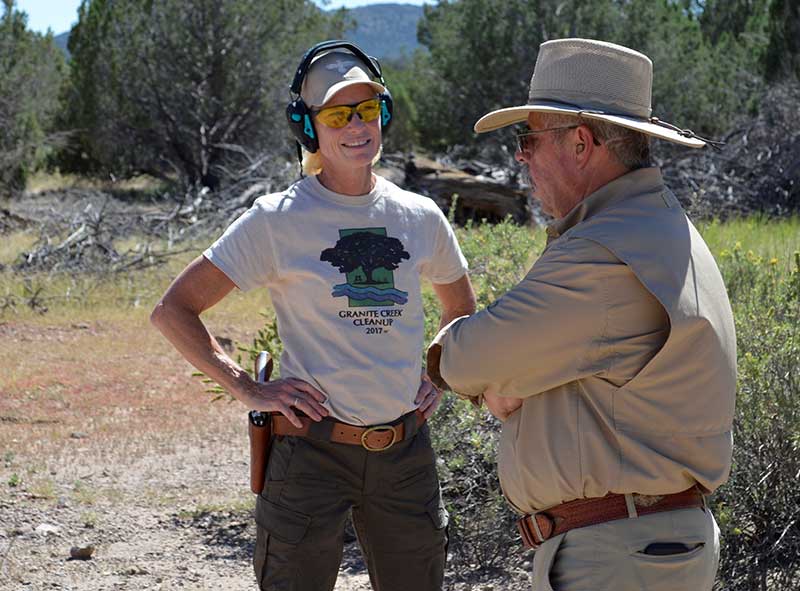
In putting the new guns (and multiple calibers) through their paces, I managed to spend a few days at Gunsite Academy going through several of their range drills supervised by a pair of instructors. JoAnne Conn from the Gunsite chapter of the Well-Armed Woman participated and used the Single Seven in a couple of runs through a slightly modified Scrambler. She cleaned the course shooting conventionally with two hands, then cleaned it again shooting one handed.
Since I had already purchased the Single Seven, I felt obliged to run the Scrambler myself and put on a good show until I missed the last target on the one-handed run. A comfortable and controllable gun/caliber combination.
Being slightly (4.5 ounces) lighter than the Single Seven, the double-action SP101 was still very comfortable to shoot. The rubber grips with wood panels weren’t necessary to control the .327’s mild recoil, but they did offer a secure grip when the Arizona sun came out and hands got sweaty. Perhaps even more important, the overall grip is relatively small, favoring shooters of small stature.
The revolver has a green fiber optic in the front-sight blade, making a sight picture more easily acquired in dim lighting. Ruger did this one right, leaving 90-degree corners on the metal blade surrounding the fiber-optic tube so you can still have a conventional sight picture.
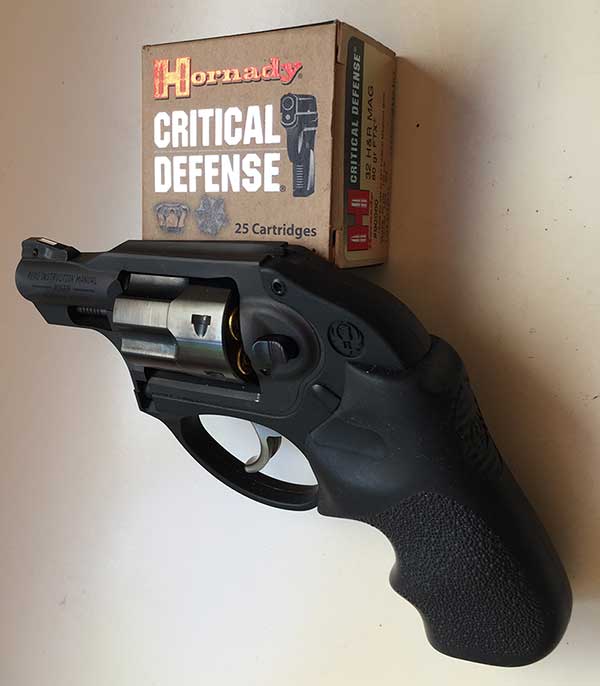
While I was immediately smitten with the Single Seven, it was the LCR that demanded my attention as a defensive weapon one would likely carry concealed. The .327 Magnum snubby has an internal hammer, making it double-action only. Given the LCR’s excellent trigger pull, I see no need for a single-action capability in a gun with a two-inch barrel that’s designed for concealed carry, particularly in a pocket.
GUNSITE DRILLS
Two of the drills Gunsite put us through stand out in my mind. First was a row of five steel plates at about ten yards. I’m not especially fast at any of the Gunsite exercises, but working the trigger as smoothly as possible, it wasn’t difficult to transition down the row and take all the plates in something like eight seconds. We were using five plates because a couple of the guys had the more conventional five-shot pocket revolvers. I can’t quantify the value of having that sixth round available, but it was comforting.
The second drill was a bit more elaborate and a better indicator of a situation you might face with the LCR as a CCW. At three yards, draw from concealment and make one shot to the head. Go to five yards and repeat the one-shot drill. Go to seven yards, draw from concealment, and make two shots to the body. Go to ten yards and repeat the two-shot drill. Go to 15 yards and repeat the two-shot drill. It was at 15 yards where I found my limitations with the little gun. Prior to that, all shots had been well centered (two in the head and four in the body). At 15 yards, lateral dispersion took place.
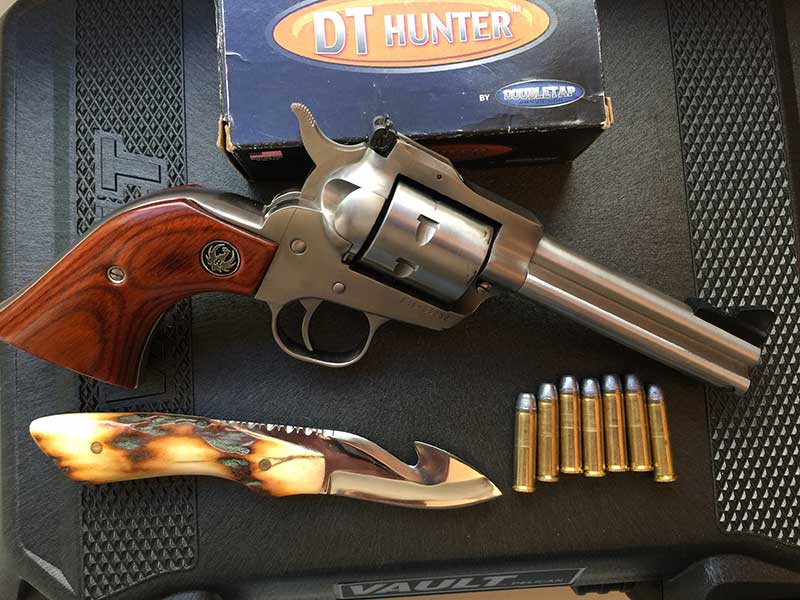
The LCR’s rear sight is a wide notch in the top strap, while the front sight is a black blade with a white stripe in the middle of the ramp. In bright light against a well-lit target, you get a conventional sight picture provided by the black blade. In dimmer ambient light and/or confronted by a darker target, all you see is the white stripe, which appears to be properly centered regardless of where it’s located in the rear notch.
My last two body shots at 15 yards were to the right, one hitting three inches inside the body and one outside the human silhouette but still on the paper. Ammo used was DoubleTap .32 H&R with 120-grain hard-cast bullets at about 900 fps. While the full .327 Mag loads with heavy-weight bullets are manageable in the LCR, the milder hard-cast lead bullets with a meplat should provide adequate penetration without the threat of over-penetration in an urban setting.
Using the LCR as a defensive weapon in CCW mode, I would use .32 H&R ammo alternating chambers with the 120-grain hard-cast DoubleTaps and Black Hills 85-grain JHP.
.327 FOR HUNTING
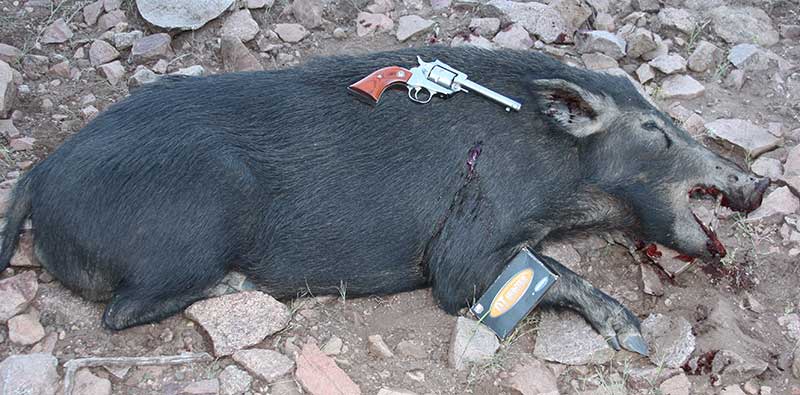
We verified penetration a few days later on a pig hunt with the Single Seven and DoubleTap’s 120-grain hard-cast .327 Magnum loads (muzzle velocity slightly under 1,400 fps). Our Well-Armed Woman took a young boar of about 150 pounds with one round that traveled through both shoulders, smashing the spine in between. The pig dropped without taking a step. Judging from the similar size of entry and exit holes, the hard-cast DoubleTap load didn’t expand but provided excellent penetration.
A couple of weeks later, I had the Single Seven in Texas where I had a chance to harvest a doe. This time I was using Federal’s .327 Magnum load with the 85-grain JHP at 1,500 fps. I had some concerns that a JHP designed for launch at 1,000 to 1,100 fps might not function properly given a muzzle velocity of 1,500 fps.
At a range of 20 yards, the bullet entered the doe and was deflected downward by a rib, coming to a stop against the sternum. The bullet did not hit any vitals and traveled a maximum of four inches inside the doe. The animal dropped on the spot and was still paralyzed when I reached her and fired a finishing shot.
To all appearances, the 85-grain JHP was traveling at speeds well above design parameters, and while it delivered an incredible shock to the deer’s nervous system, penetration was less than desired. The load I wanted to try on the deer hunt was the 100-grain GDHP, but unfortunately I only had a couple rounds left by the time I reached Texas. Maybe next year?
It’s easy to say I’m impressed with the .327 Magnum’s potential both for self-defense and medium game hunting.
Carrying the Ruger LCR, I’d be very comfortable with six rounds of .32 Magnum loads filling the chambers. Carrying a bigger gun, use either .32 or .327 loads, whatever you shoot best. I didn’t have a way to test it, but I’d be very curious to see what DoubleTap’s 120-grain hard-cast .327 Magnum rounds would do to a car body.
Big performance from a small gun with minimal recoil. Good package!

